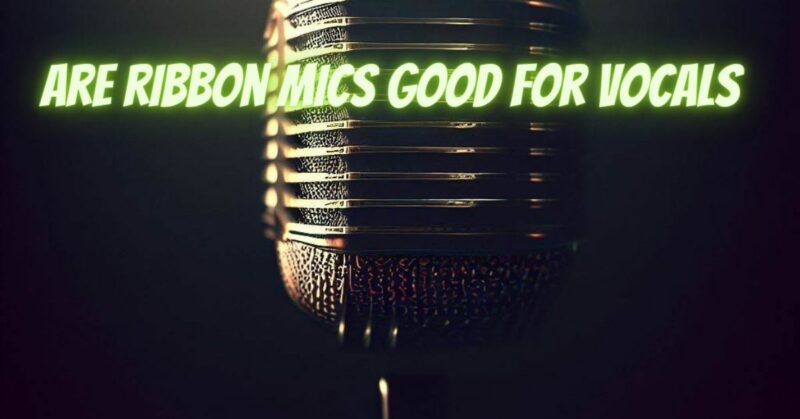When it comes to recording vocals, choosing the right microphone is crucial to capture the nuances and character of the singer’s voice. While condenser and dynamic microphones are commonly used for vocals, ribbon microphones are often overlooked but can offer a unique and desirable sound. In this article, we will explore the characteristics of ribbon microphones and discuss their suitability for recording vocals.
Understanding Ribbon Microphones: Ribbon microphones utilize a thin metal ribbon suspended between magnets to capture sound. This design creates a warm and smooth sound reproduction, characterized by a natural and vintage-like tone. Ribbon microphones are known for their ability to capture fine details, transient response, and their ability to handle high sound pressure levels.
Advantages for Vocal Recording:
- Smooth and Natural Sound: Ribbon microphones have a balanced frequency response, which can result in a natural and warm representation of the vocalist’s voice. They tend to capture vocals with a pleasing and vintage-like character, adding a touch of warmth and smoothness.
- Transient Response: Ribbon microphones excel at capturing the subtle nuances and transient details in vocal performances. They have a fast transient response, allowing them to accurately capture the quick changes in volume and dynamics, resulting in a more realistic and dynamic vocal recording.
- Gentle High-Frequency Roll-Off: Ribbon microphones typically exhibit a gentle roll-off in the high-frequency range, which can help tame sibilance and harshness in vocal recordings. This can be particularly beneficial for singers with bright or sibilant voices, providing a more balanced and pleasing representation.
Considerations:
While ribbon microphones offer unique sonic characteristics for vocals, there are a few considerations to keep in mind:
- Fragility: Ribbon microphones are delicate and sensitive to mishandling, strong wind, and high sound pressure levels. Care must be taken to avoid physical damage to the ribbon element, which can affect its performance. Using a pop filter and proper handling techniques can help protect the microphone.
- Low Sensitivity: Ribbon microphones typically have lower sensitivity compared to condenser microphones. As a result, they may require additional gain from a preamp or mixer to achieve optimal recording levels. This can introduce some background noise, so it’s important to use a low-noise preamp or audio interface.
- Proximity Effect: Ribbon microphones can exhibit proximity effect, where the low frequencies become more pronounced when the singer is close to the microphone. This can add warmth and richness to the vocals but may require careful positioning and experimentation to find the desired tonal balance.
Conclusion:
Ribbon microphones can be an excellent choice for capturing vocals, providing a unique and vintage-like sound with smoothness, transient response, and a natural tone. They offer a different sonic signature compared to condenser and dynamic microphones, and their ability to capture fine details can result in highly nuanced vocal recordings. However, it’s important to consider their fragility, lower sensitivity, and the potential for proximity effect. By understanding these characteristics and taking appropriate precautions, ribbon microphones can be a valuable tool for vocal recording, particularly for those seeking a vintage and intimate sound.


